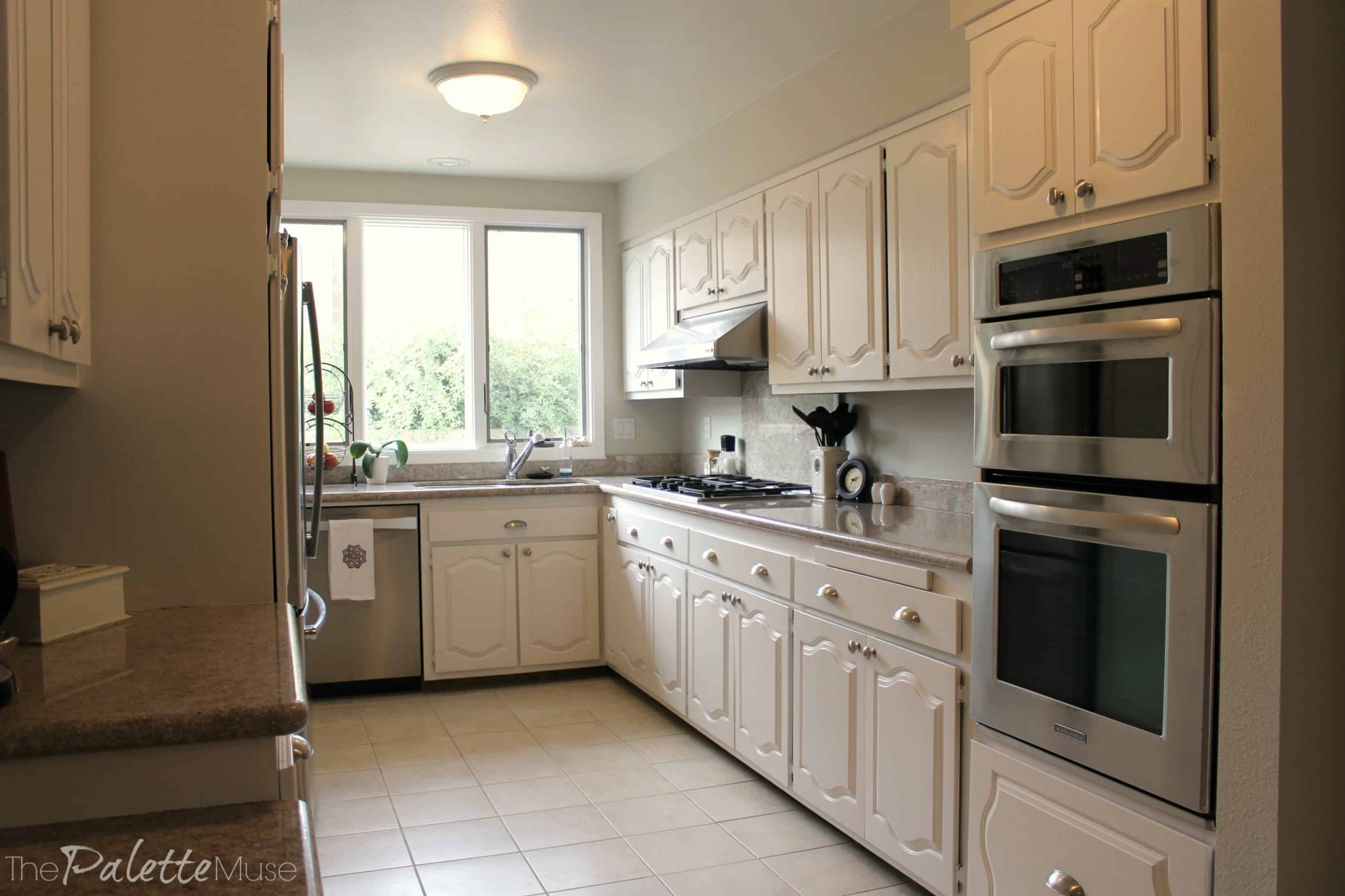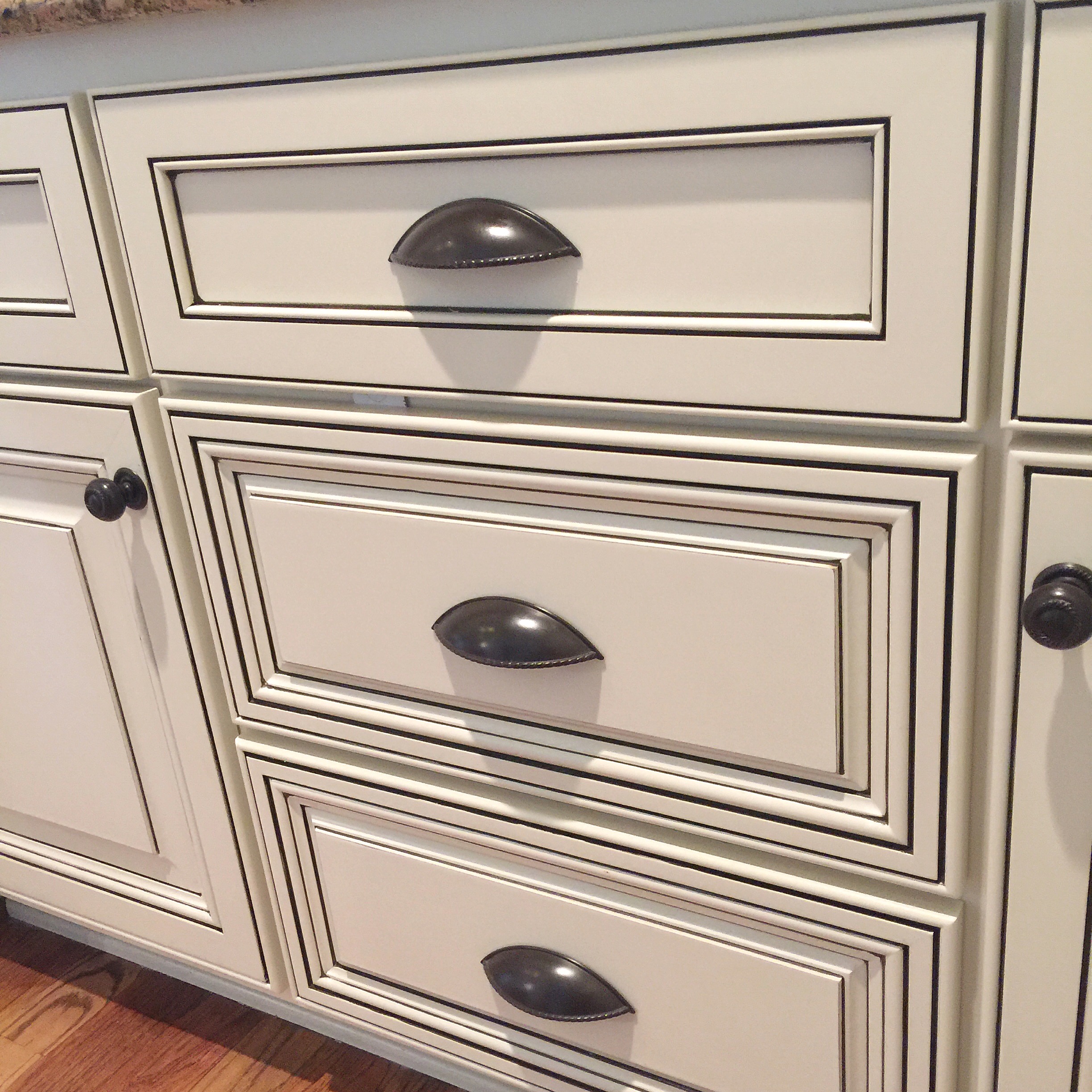Preparing Kitchen Cabinets for Glaze: How To Paint Kitchen Cabinets With Glaze Finish

The whisper of the past echoes in these worn wooden surfaces, each imperfection a story waiting to be retold, not erased. Preparing your kitchen cabinets for a glaze finish is a labor of love, a careful dance between preservation and transformation. It requires patience, precision, and a touch of melancholy for the beauty that lies beneath the surface, soon to be revealed in a new light.
Cleaning Kitchen Cabinets
A thorough cleaning is the first step in this gentle resurrection. Grease, grime, and years of accumulated dust must be meticulously removed to ensure the glaze adheres properly and reveals the true character of the wood. Use a degreasing solution, such as a mixture of warm water and mild dish soap, applied with a soft cloth or sponge. Rinse thoroughly with clean water and allow the cabinets to dry completely before proceeding. This cleansing ritual prepares the surface for the next stage, revealing the canvas upon which we shall paint our new memories.
Sanding Kitchen Cabinets
The act of sanding is a meditation on the passage of time. Each stroke removes a layer of history, smoothing the surface for a flawless glaze. Begin with a higher-grit sandpaper (around 120-grit) to remove any remaining imperfections or raised grain. Gradually transition to a finer grit (around 220-grit) for a supremely smooth finish. The goal is not to strip the existing finish entirely, but rather to create a uniform surface for optimal glaze adhesion. Remember to sand with the grain to avoid scratches, preserving the wood’s inherent beauty.
Materials for Surface Preparation
The tools and materials required are few, yet essential. They are the instruments of our careful restoration, each playing a crucial role in the transformation. Gather the following:
- Degreasing solution (warm water and mild dish soap)
- Soft cloths or sponges
- Assorted grit sandpaper (120-grit, 220-grit)
- Sanding block (for even pressure)
- Wood filler (appropriate for the type of wood)
- Putty knife
- Safety glasses
- Dust mask
These simple tools, wielded with care, will reveal the potential held within the aged wood.
Filling Imperfections
Before the glaze, we address the scars of time. Cracks, dents, and other imperfections are filled with wood filler, carefully chosen to match the existing wood’s color and grain. Apply the filler sparingly with a putty knife, ensuring it’s level with the surrounding surface. Allow the filler to dry completely according to the manufacturer’s instructions, then lightly sand smooth with fine-grit sandpaper. This meticulous process ensures a seamless transition, a unified surface ready to receive the final layer of glaze.
Comparison of Wood Fillers
| Wood Filler Type | Pros | Cons | Best Application |
|---|---|---|---|
| Epoxy Wood Filler | Strong, durable, water-resistant | Can be difficult to sand, may require special tools | Large cracks, significant damage |
| Wood Putty | Easy to apply and sand, readily available | Less durable than epoxy, may shrink over time | Small imperfections, minor scratches |
| Solvent-Based Wood Filler | Shrinks minimally, good for fine woodworking | Strong odor, requires good ventilation | Fine detail work, intricate repairs |
| Water-Based Wood Filler | Low odor, easy cleanup | Can be less durable than solvent-based fillers | Small repairs, where minimal odor is desired |
Each filler holds its own story, its own strengths and weaknesses, suited to the specific needs of the project. The choice depends on the scale of the repair, the desired durability, and the environment.
Applying the Glaze Finish

The glaze, a whisper of color, a fleeting shadow, dances upon the wood, transforming the mundane into something touched by time and memory. Each stroke, a brush with the past, a delicate layering of emotion onto the heart of the home. The application, a quiet ritual, a slow, deliberate unveiling of beauty.
How to paint kitchen cabinets with glaze finish – Several methods exist for applying glaze, each offering a unique texture and depth. The choice depends on the desired effect and the painter’s comfort level. Consider the temperament of the glaze, its willingness to yield to the brush, the sponge, or the rag.
Glaze Application Methods
The tools themselves become extensions of the artist’s soul, shaping the final expression. Each method imparts a distinct character, a subtle fingerprint of the process.
- Brushing: A bold, expressive technique, the brush leaves behind its signature, visible strokes of color, creating a lively, textured surface. The amount of glaze on the brush dictates the intensity of the color and the thickness of the layer. A stiffer brush produces bolder strokes, while a softer brush provides a more delicate application.
- Sponging: A softer touch, the sponge diffuses the glaze, creating a subtle, mottled effect. The sponge’s porous nature allows for a delicate layering of color, ideal for achieving a distressed or antiqued look. Different sponge densities yield varying levels of texture. A denser sponge will impart a more even coat, while a less dense sponge will leave more texture.
- Ragging: A controlled chaos, the rag allows for a more unpredictable application, resulting in a unique, personalized finish. The technique involves wiping away excess glaze, revealing the underlying color in places and creating an uneven, aged appearance. The type of rag – linen, cotton, cheesecloth – each imparts a different character to the final product.
Glaze Color and Thickness, How to paint kitchen cabinets with glaze finish
The color of the glaze, a subtle murmur, a whispered secret, plays a crucial role in the overall aesthetic. The depth of the color, its intensity, its transparency, all contribute to the final mood.
- Dark glazes, like deep browns or charcoal grays, create a dramatic, aged effect, lending a sense of history and gravitas to the cabinets. A thick application will dramatically alter the base color, while a thin application will subtly enhance the existing shade.
- Light glazes, such as creamy whites or soft pastels, offer a more delicate touch, adding a subtle warmth or coolness to the overall look. The thickness of the glaze will determine the level of opacity; a thicker application will create a more noticeable change in tone.
- Glazes with color variations, such as those with hints of metallics or pearlescence, introduce depth and complexity, adding subtle sparkle and intrigue. The thickness affects the intensity of the metallic shimmer; a thicker application will showcase the metallic particles more prominently.
Achieving a Distressed or Antiqued Look
The pursuit of the aged, the weathered, the subtly worn – a yearning for a past that whispers of stories untold. Glazing offers a pathway to this nostalgic aesthetic, transforming the new into the seemingly ancient.
- Apply a base coat of paint. Allow it to dry completely.
- Apply a layer of glaze using a rag, focusing on the areas where wear would naturally occur – edges, corners, and handles.
- Immediately begin wiping away excess glaze with a clean rag, revealing glimpses of the underlying paint color. The speed and pressure of wiping determine the degree of distressing.
- Allow the glaze to dry completely. This step requires patience, a quiet contemplation of the process.
- Optional: Lightly sand certain areas to further enhance the distressed look, adding another layer of depth and texture.
Sponging Technique: A Step-by-Step Visual Guide
Imagine the sponge, a soft cloud, gently depositing the glaze, a delicate rain of color. Each dab, a whisper, a soft caress, building the layers of texture and depth.
- Pour a small amount of glaze onto a palette or disposable plate.
- Lightly dip a clean, damp sponge into the glaze, ensuring it’s not overly saturated. Excess glaze will lead to drips and uneven coverage.
- Gently dab the sponge onto the cabinet surface, working in small sections. Avoid heavy pressure; a light touch is key.
- Overlap each dab slightly to ensure even coverage, but avoid re-applying glaze to the same area multiple times. This will prevent build-up and potential drips.
- Wipe away any excess glaze with a clean, dry cloth or rag immediately after sponging each section. This will prevent streaking and unevenness.
- Allow the glaze to dry completely before applying additional coats if desired.
Finishing Touches and Maintenance

The final stages of glazing your kitchen cabinets are as crucial as the initial preparation. A hasty finish can undo all the meticulous work that went before, leaving you with a surface that is less than perfect. Patience and attention to detail are paramount in achieving a truly stunning result; a testament to your dedication and craftsmanship.
Patience, a virtue often tested in home improvement projects, is especially important during the drying phase. The glaze needs ample time to cure properly; rushing this process can lead to an uneven finish, drips, or a sticky surface that will be easily marred. Proper drying prevents these issues, ensuring a beautiful, long-lasting result that reflects the care taken in its creation.
Drying Time and Surface Evenness
Allowing sufficient drying time is key to a flawless glaze finish. The manufacturer’s instructions should be followed carefully, but generally, a minimum of 24 hours between coats is recommended, with longer drying times in humid conditions. A consistent temperature and humidity level in the room where the cabinets are drying will help to prevent uneven drying. Should you notice drips or runs, gently smooth them out with a damp, soft cloth *before* they dry completely. For larger imperfections, carefully and lightly sand the area once fully dry, then reapply a thin coat of glaze. The goal is to achieve a subtle, even sheen, avoiding any stark differences in texture or color across the cabinet surfaces. Think of it as a slow dance; each step must be taken with care and deliberation.
Recommended Sealants and Topcoats
Protecting your newly glazed cabinets is crucial for their longevity. Several sealant options exist, each offering a unique balance of durability and ease of application. A polyurethane sealant, for instance, provides exceptional durability and resistance to scratches and moisture, but it can be more challenging to apply evenly than a water-based sealant. Water-based sealants are easier to work with, providing good protection, though perhaps not as robust as polyurethane in the long term. Consider the level of protection needed and your comfort level with application when making your choice. A careful selection ensures that the fruits of your labor are safeguarded for years to come.
Long-Term Maintenance and Repair
Even with proper sealing, regular maintenance is necessary to preserve the beauty of your glazed cabinets. Gentle cleaning with a soft cloth and mild soap is usually sufficient. Avoid abrasive cleaners or scouring pads, as these can damage the glaze. Minor scratches or imperfections can often be addressed with a touch-up of glaze. For deeper scratches, lightly sanding the area and reapplying the glaze may be necessary. This careful maintenance will ensure your cabinets retain their charm, reflecting the love and care invested in their creation, long after the initial glow of completion has faded. The gentle patina of time, in this instance, adds to the beauty rather than detracting from it.
